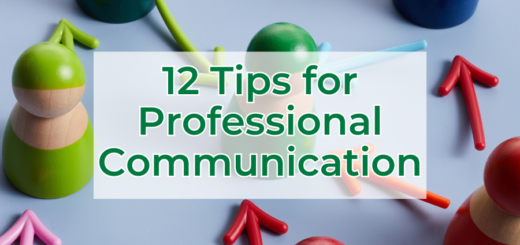10 Studying Hacks to Help You Ace Your Next Exam
Do you have an exam coming up? Maybe you’ve re-read the textbook, taken notes, and even shuffled through a deck of hand-made flashcards. Perhaps some of the material just isn’t sticking.
You might be wondering: What else can I do?
While nothing can replace hard work and dedication, psychology has some unconventional studying hacks that could help you ace that upcoming mid-term or final. Give these 10 techniques a try!
1. Multimodal Learning = Stronger Memory Links
You might have heard of the three “learning styles” or even taken a test to discover yours!
- Auditory: Learning best through words, audio, and recordings
- Visual: Learning best through pictures, images, and graphics
- Tactile: Learning best through hands-on demonstrations, case studies, and examples
Here’s the big secret nobody tells you: Research shows that the most helpful way to use learning styles isn’t to focus on just one, but to combine all of them together. This is called multimodal learning.
For example, let’s say you’re trying to memorize the name of a historical figure like Booker T. Washington. You might try:
- Auditory: Saying the name out loud 10 times while…
- Visual: Writing the name on a piece of paper 10 times and then…
- Tactile: Spelling the name in the air with your finger 10 times
Remember, the more learning styles you use, the stronger your memory links to that material. Here are a few more ideas.
2. Mnemonic Devices = Better Recall
A mnemonic device is something that helps you remember something else.
For example, let’s say you’re trying to remember the difference between a stalactite and a stalagmite. You might think to yourself, “Stalactite has the word ‘tight’ in it, so stalactites are the ones that have to cling tightly to the ceiling or else they’ll fall.” Or you might think, “Stalactite has a ‘c’ for ‘ceiling’ and stalagmite has a ‘g’ for ‘ground’.”
Here are a few other examples:
- The word “horizontal” has the word “horizon” in it, so it’s left-to-right instead of top-to-bottom.
- The phrase “My very educated mother just served us noodles” is the order of the eight planets from the sun (Mercury, Venus, Earth, Mars, Jupiter, Saturn, Uranus, Neptune).
- Put the Greek alphabet, steps of the circulatory system, or prepositions to a familiar tune like “Yankee Doodle” or “Twinkle Twinkle Little Star” — or browse pre-existing YouTube songs for inspiration. It’s hard to get a catchy medley out of your head, which makes the memorizing process easier!
You can even use taste and smell as mnemonic devices. Some students find, for example, that when they eat a mint while studying a specific subject, like math, then eat a mint while taking a math exam, they have better recall.
3. Teach It = Master It!
When you can explain something to another person, it means you’ve mastered it.
Find a classmate, friend, sibling, or parent. Then, try explaining what you’re studying to them. Encourage them to ask you questions if they don’t understand, which may help you think about the information in a new way and create stronger correlations between the different topics.
If you and your classmates have a study group, take turns explaining different concepts, chapters, or material to each other. Being the expert in the room is a great feeling!
You can even use this technique with your pet…just don’t expect them to ask many questions back!
4. Abstract to Concrete = Stronger Comprehension
Have you ever asked: “Could you give me an example?”
Humans are concrete beings. Most of us tend to grasp examples, facts, and data more easily than ideas, concepts, and theories. A big hurdle with studying textbooks is that they tend to be written abstractly.
For example, you might be reading about the Cost vs. Benefits Principle in economics class. Your textbook may say something like “When the benefits of doing something are greater than the costs necessary to do them, you are more likely to invest.”
When you encounter an abstract concept like this, try to look up or create a concrete example of this idea. For example: “A student chooses to pursue a college degree instead of going to work straight out of high school. Although this takes additional time and money from the student, it is worth it to pursue their dream career and make more money back than they invested.”
5. Switch Topics = Connect Ideas
Every 20 minutes or so, switch to studying a different topic within the same subject. This helps link the different concepts together into one big picture.
For example, if you are studying English in Composition I, you might spend 20 minutes studying alliteration and then 20 minutes studying “The Raven” by Edgar Allan Poe, only to realize that Poe uses alliteration throughout this poem to create a more suspenseful sound. You are then able to reinforce the idea that alliteration in poetry can create rhythm and even be used to add suspense to the tone of a poem.
6. 15-Minute Break/45 Minutes = More Brain Power
Our brain needs a breather. There comes a point when studying stops being effective because our brains are oversaturated. This is also one reason why cramming all night before an exam may not help you retain the information very well.
Every 45 minutes, enjoy a half-episode of your favorite show, a level in your favorite video game, or a chapter from your favorite book. Or take a stroll outside to get your energy flowing and your brain cleared. Just don’t forget to return to studying once break time is up!
7. Singletasking = Maintaining Focus
It’s the opposite of multitasking! The goal is to maintain your focus on the task at hand.
In addition to frequent breaks, your brain also needs time to warm up to a subject. Frequently checking your phone and social media notifications or doing any other disruptive activity will break your flow.
Imagine that your goal is to build an imaginary tower out of blocks. For every minute you spend focused on studying, a block is added to the tower. At four minutes, you have four blocks stacked up; at five minutes, five blocks, and so on. Checking a notification on your phone knocks the tower down, forcing you to start from block one. However, every 45 minutes, the blocks stay in place, even if you take a break.
Try to stay on-task with studying for 45 minutes and remind yourself that your 15-minute break is coming — at which point you can check your notifications and update your Instagram. In fact, it may even be a good idea to set your phone out of reach, where it can’t distract you!
8. Get Quizzed = Stronger Test-Taking
A lot of students simply read the material directly from their book or notes and count this as studying, when, really, they’re just glazing over the information and not internalizing it.
Give your friend or family member a list of quiz questions to ask you, or form a study group with other classmates and quiz each other. This forces you to reflect over the question being asked, retrieve data from your memory, and formulate a response, which reinforces your link to the information. You can use flashcards, bold terms, end-of-chapter questions, study guides, PowerPoints, and more to create the ultimate quizzing experience. Be creative!
9. Create Stories = Remember Information
With this trick, you use the study material to create the ultimate mnemonic device — a story.
For example, let’s say you’re trying to remember the five canons of rhetoric: invention, arrangement, style, memory, and delivery.
You might begin by drawing a picture where an inventor (invention) is delivering (delivery) five canons that are each styled (style) in a different pattern and arranging them (arrangement) in a row. While doing this, the inventor is memorizing (memory) the canons he has just delivered.
With this story and image in your head, it becomes much easier to remember the five canons of rhetoric.

10. ‘Tween-time = Extra Practice
Do you find yourself waiting 10 minutes outside class? Driving a half-hour commute to college, work, or the store? Standing at the curbside for your ride to pick you up?
This is ‘tween-time (short for “between time”), and it’s a study master’s best-kept secret!
If you find small pockets of time throughout your day, try to fill them with studying. Not only will this increase your odds of exam-acing success, but it will also cut down on how much time you may need to spend studying during your more relaxing downtime. For example:
- Write test notes or take pictures of study flashcards on your phone; review them while standing in the checkout line or waiting on someone.
- Record class lectures (with your instructors’ permission) or record yourself reading lecture notes and play them back while you drive, work out, or clean the house.
- Jot down a few ideas or brainstorm your essay using the notes feature on your phone.
- Message a classmate to arrange a study group session (or quiz each other back and forth through Facetime or a group chat).
The Bottom Line
The secret to acing exams is starting early and staying consistent! Begin the review process the moment the exam is announced (or if you know it’s coming based on the course schedule, set aside a little time each day to prepare). Try these outside-the-box techniques to improve your performance when the big day arrives!
Did you know that the Career Planning & Development Center offers workshops on study skills, time management, organization, and more? For more information, reach out to your campus’ Career Center and request a virtual, self-paced workshop. We look forward to hearing from you!
- Leave Your Legacy (Paver) at EFSC - April 24, 2024
- Five Anime To Watch in College - April 10, 2024
- Dress for Success: All About the Titan2Titan Clothing Closet - April 3, 2024







